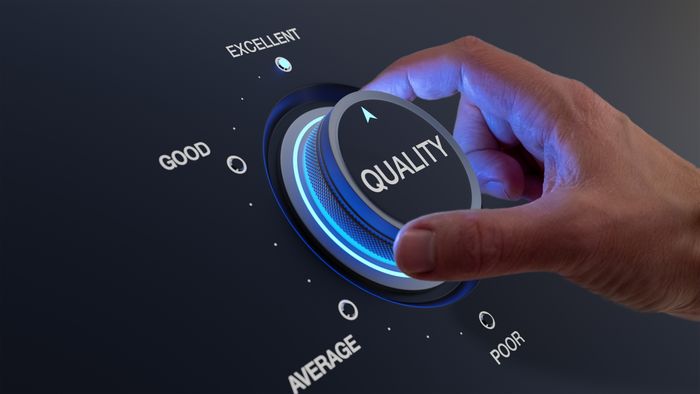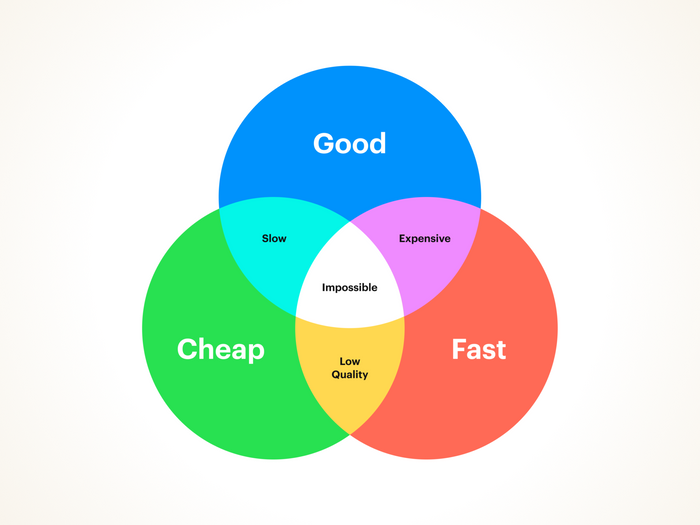The Iron Triangle in Construction: Quality, Speed, Cost
The Iron Triangle in Construction: Quality, Speed, Cost – Choose Wisely!
 Introduction: The concept of the Iron Triangle holds true in the construction world greater than any other field. When it comes to construction projects, achieving a balance between quality, speed, and cost is a challenging endeavor. As the saying goes, you can have two, but not all three. Let’s explore the significance of the Iron Triangle in construction and the choices it presents.
Introduction: The concept of the Iron Triangle holds true in the construction world greater than any other field. When it comes to construction projects, achieving a balance between quality, speed, and cost is a challenging endeavor. As the saying goes, you can have two, but not all three. Let’s explore the significance of the Iron Triangle in construction and the choices it presents.
Quality: High-quality construction involves meticulous planning, skilled craftsmanship, and adherence to strict standards. It ensures the longevity, safety, and functionality of the structure. Achieving superior quality often requires using premium materials, implementing robust processes, and having the skills and knowledge to execute on tasks. However, prioritizing quality can lead to higher costs and longer project durations.
 Speed: In a competitive market, completing construction projects quickly is often a priority in the commercial arena. Clients and stakeholders may have time-sensitive goals or strict deadlines. Accelerated construction timelines involve efficient project management, streamlined processes, and dedicated resources working long hours, and often into the weekends. Expediting construction may often require additional labor, overtime costs, or the need to simplify certain aspects, potentially compromising aesthetics.
Speed: In a competitive market, completing construction projects quickly is often a priority in the commercial arena. Clients and stakeholders may have time-sensitive goals or strict deadlines. Accelerated construction timelines involve efficient project management, streamlined processes, and dedicated resources working long hours, and often into the weekends. Expediting construction may often require additional labor, overtime costs, or the need to simplify certain aspects, potentially compromising aesthetics.
 Cost: Cost considerations play a significant role in construction projects. Clients seek cost-effective solutions that align with their budget constraints. Opting for economical construction methods, materials, or design modifications can help reduce expenses. However, minimizing costs may involve compromises in either quality or speed. Lower-priced options may sacrifice the use of premium materials, or force less than desirable General Contractors with using unskilled and cheap labor and or unlicensed, uninsured subcontractors.
Cost: Cost considerations play a significant role in construction projects. Clients seek cost-effective solutions that align with their budget constraints. Opting for economical construction methods, materials, or design modifications can help reduce expenses. However, minimizing costs may involve compromises in either quality or speed. Lower-priced options may sacrifice the use of premium materials, or force less than desirable General Contractors with using unskilled and cheap labor and or unlicensed, uninsured subcontractors.Navigating the Iron Triangle in Construction: Balancing the elements of the Iron Triangle requires careful planning and decision-making. Construction professionals and clients must understand the trade-offs involved and make informed choices.

Effective communication between clients and General Contractors is essential. Clients must clearly communicate their priorities, budget constraints, and desired project outcomes. GC’s can provide insights into the implications of each option, helping clients make informed decisions.Transparency is key. GC’s should outline the potential effects on quality and speed when considering cost-saving measures. Clients need to understand the impact of compromises and the potential long-term consequences.
Collaboration is crucial to find the right balance. Contractors can propose alternative solutions or value engineering option approaches that optimize quality and speed within budget limitations.
Conclusion: In the construction industry, the Iron Triangle of quality, speed, and cost presents a complex challenge. Balancing these factors is crucial to delivering successful construction projects. Understanding the inherent trade-offs and making informed decisions can lead to the optimal combination of quality, speed, and cost.


